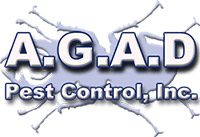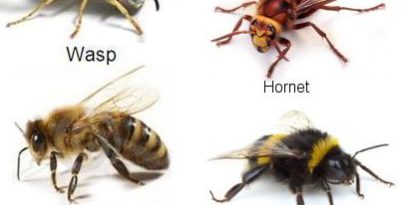Bees –
The three most common types of bees include Honey bees, Carpenter bees and Bumblebees
It’s hard to tell the difference between a bee and wasp, although honey bees have a distinctly darker yellow tone.
Bees are fatter, and wasps are thin and long. Bees are also furry, and wasps have no hair.
Bees are non-aggressive, while wasps are aggressive and will sting multiple times.
Some bees create nests in the ground, while others build nests in trees, homes and underneath roof eaves.
Aside from honey and beeswax, bees are most famous for their stings. The degree of pain caused by the sting varies greatly from one species to another. The honey bee and the bumblebee are known for having painful stings, while the sweat bee is known for having a very mild sting.
Wasps –
The wasp is often confused with certain species of bees. Wasps have little or no hair, and typically have yellow and black bodies. Wasps include both yellow jackets and hornets.
People are most often stung in late summer, when wasp colonies stop breeding new workers; the existing workers search for sugary foods and are more likely to come into contact with humans; if people then respond aggressively, the wasp’s sting. Wasp nests made in or near houses, such as in roof spaces, can present a danger as the wasps may sting if people come close to them. Stings are painful rather than dangerous, and are dangerous to humans who are allergic. In rare cases people may suffer life-threatening anaphylactic shock.
Yellow Jackets –
Yellow jackets are confused with bees because they have a very similar appearance. With a black and yellow body, it’s difficult to tell the difference between the two at first glance.
Yellow jackets are a type of predatory wasp. Most are black and yellow, but some, like the bald-faced hornet, are black and white.
Yellow Jackets use a side-to-side flight pattern prior to landing, and all females have stingers.
Yellow jacket workers are often confused with honey bees, but these insects have little hair and do not carry pollen.
Yellow jackets have stingers with tiny barbs, and they can sting multiple times. The venom is only dangerous to humans who are allergic to the substance and are stung numerous times.
The yellow jacket wasp prefers to build its nest in shrubs or other protected places, like man-made structures, tree stumps, and mouse burrows.
Hornets –
Hornets closely resemble the yellow jacket wasp. Some hornet species can grow to be 2.2” long.
Hornets are considered pests, and are aggressive in defending their nests when threatened.
The Danger of Hornet Stings
A hornet’s sting is more dangerous to humans than bees and wasps. Its sting is painful, and the venom contains a higher concentration of acetylcholine.
Hornets can also sting repeatedly without dying because their stingers are not barbed and cannot be pulled out of their bodies.
Single stings from the European hornet is not believed to be dangerous, unless the victim is allergic to the venom.
Hornets also release attack pheromones that tell other members of the colony to attack, which can be very dangerous to humans and animals.






